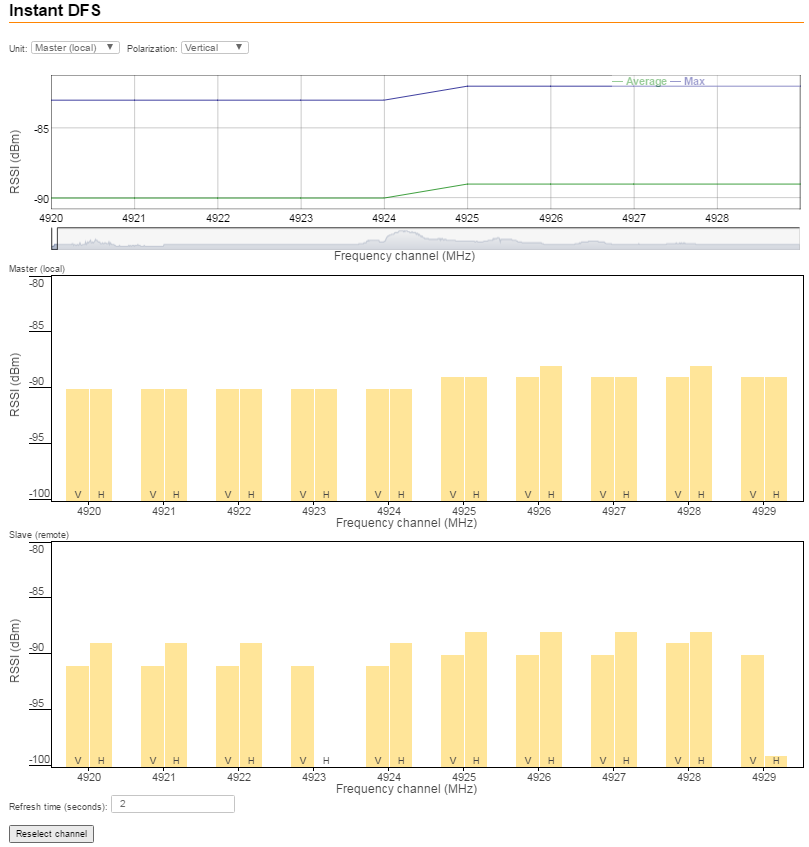Successfully pass the free certification exam at IW Academy and become an Infinet Certified Engineer.
Instant DFS tool allows to visualize the "Instant DFS" option statistics and gives the possibility to speed up the process of frequency reselection.
NOTE
In case of "Instant DFS" tool disabled (no radio link connection or when there are legislative or other limitations) the system displays "Service switched off".
Section contains three graphs:
RSSI/Frequency channel
Dependency graph of average (green line) and maximum (blue) RSSI values for the selected unit type (master, slave), polarization (horizontal, vertical) from the frequency channel.
In order to view the exact average and max RSSI values depending on frequency select point on the graph.
Master (local) and Slave (remote)
Detailed RSSI/Frequency channel graphs for the Master and Slave.
Color indication provides better visualization for each channel:
- Downlink - channels from Master to Slave;
- Uplink - channels from Slave to Master;
- Ready - ready for switching channels;
- САС - channels undergoing Channel Availability Check procedure;
- NOL - no transmission is allowed on a channel that has detected a radar signal.
Parameter values for the selected frequency are displayed in the table by clicking on the graph:
- Frequency;
- Avg RSSI V/H;
- Max RSSI V/H;
- Uptime (Uplink/Downlink);
- TBER V/H (Uplink/Downlink);
- Non-occupancy timeout (NOL);
- CAC remaining time (CAC).
All data is updated with the specified period (2 seconds, by default). In order to change this period set the required value in the field "Refresh time (seconds)".
To speed up uplink/downlink frequency selection process click the "Reselect channel" button. In this case the frequency change timeout specified in the "Instant DFS" option configuration is not take into account and the frequency is changed if:
- The average RSSI value on the selected channel is lower than on the current;
- When the average RSSI values are equal and the maximum RSSI value on the selected channel is lower than on the current.


